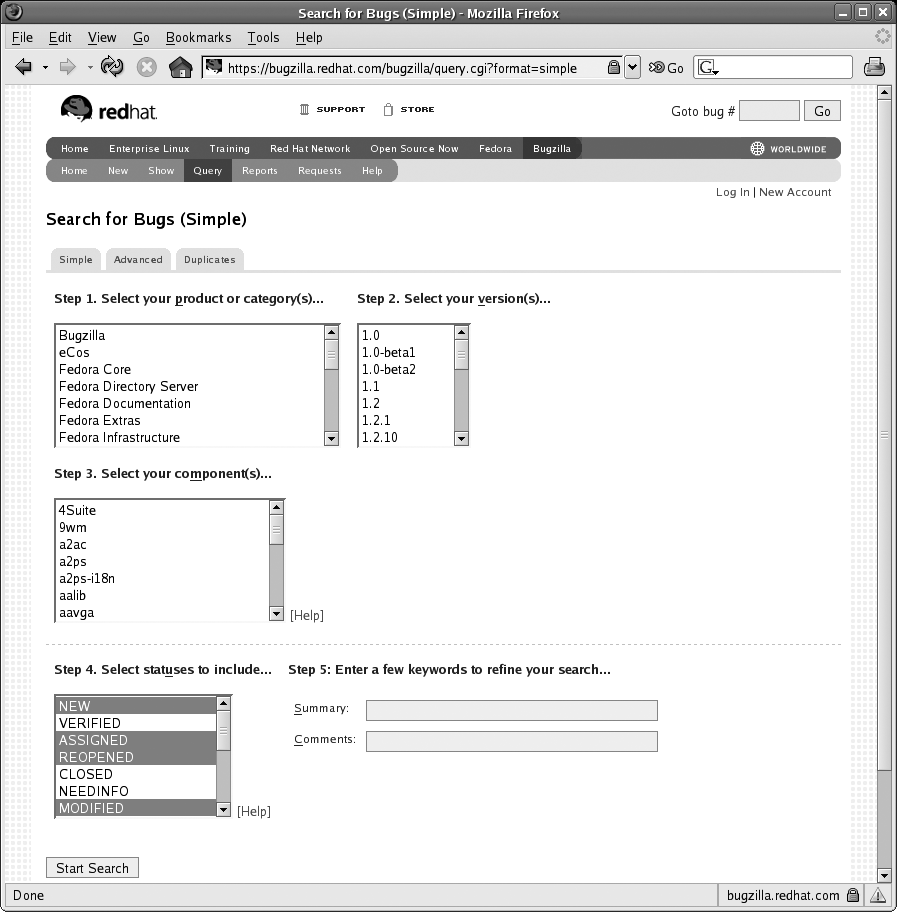Using Bugzilla
Fedora consists of thousands of packages, with complex interactions between the packages. To keep track of bugs and problem reports, Fedora uses the Bugzilla bug-tracking database. You can directly query this database to get information about past and present issues, to submit bug reports of your own, and to add information to existing bug reports.
How Do I Do That?
You can access the Fedora Bugzilla system with a web browser by visiting http://bugzilla.redhat.com.
Figure 9-6 shows the main Bugzilla page, on which you will find a Quick Seach field. There, you can enter a bug number that you have heard mentioned elsewhere, or you can enter some keywords related to an issue or bug.

Figure 9-6. Bugzilla main page
Tip
In the Bugzilla system, the word bug is used loosely; any issue, patch, enhancement request, or trouble report is called a bug.
The Query tab provides a more precise way of searching, as shown in Figure 9-7. Using that interface, you can narrow your search to a specific package in a particular version of Fedora Core or Fedora Extras. For options that are even more detailed, click on the Advanced tab.

Figure 9-7. Bugzilla query page
Your query will yield a list of matching bugs with their summaries, as shown in Figure 9-8. Clicking on a bug number will display a detailed ...